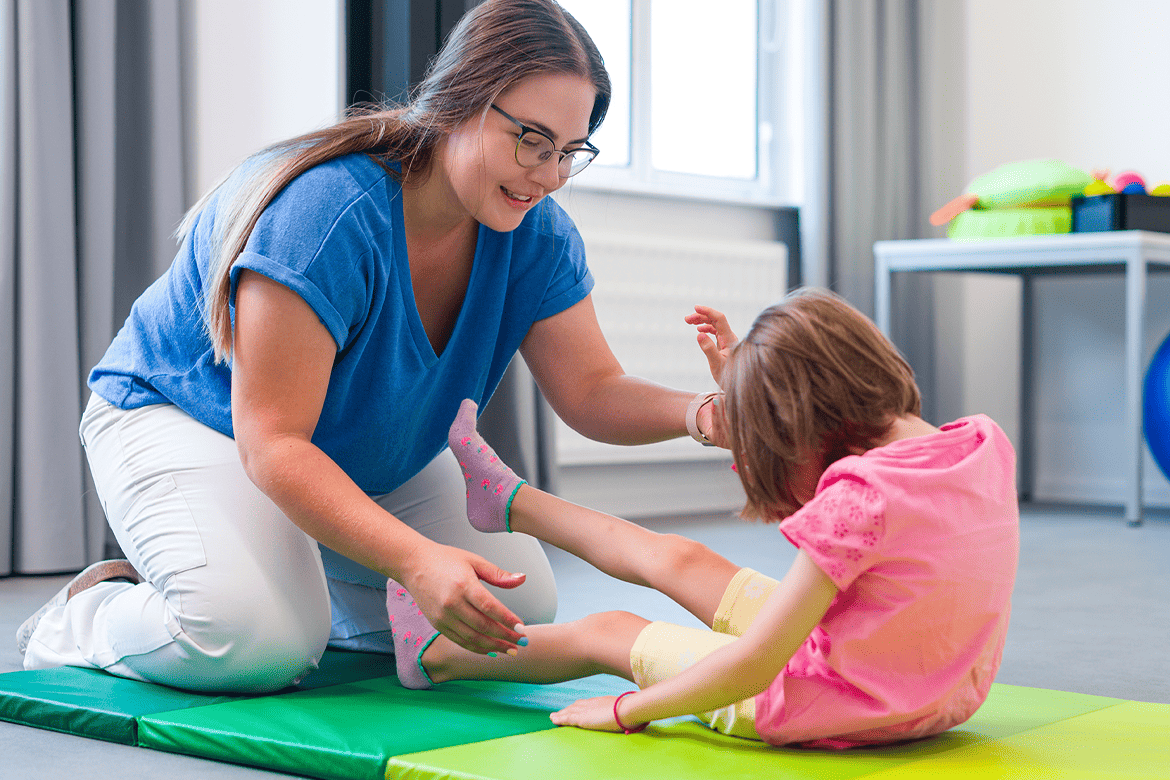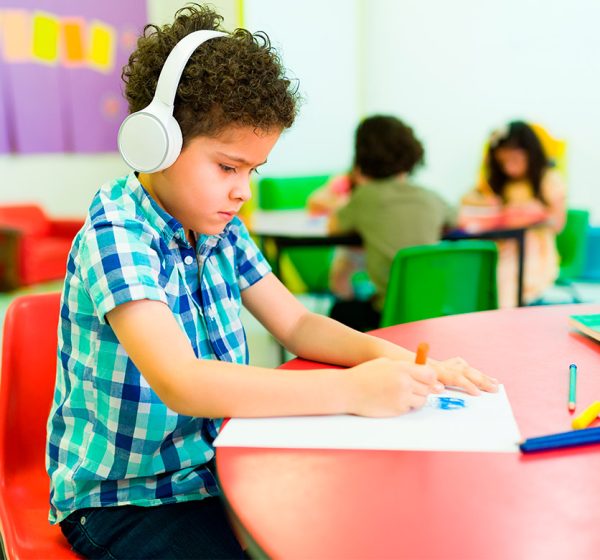Watching a child grow and develop is a beautiful journey, filled with milestones like taking those first wobbly steps, learning to ride a bike, or mastering the monkey bars at the playground.
However, for some children, achieving these developmental milestones can be challenging due to difficulties with balance and coordination. These struggles can impact not only their physical abilities but also their confidence and participation in everyday activities. This is where pediatric physical therapy plays a crucial role.
By focusing on strength, stability, motor control, and sensory integration, physical therapy can help children gain the confidence and ability to move more freely and safely in their daily lives.
Understanding Balance and Coordination
Balance and coordination are essential motor skills that enable children to perform everyday activities with ease and efficiency. Balance refers to the ability to maintain a stable position, whether stationary or in motion, while coordination is the ability to execute smooth and controlled movements involving multiple muscle groups.
Both of these skills are crucial for a child’s overall development and affect their ability to participate in various physical, social, and academic activities.
The Importance of Balance
Balance is an intricate skill that requires input from multiple systems within the body. It is primarily influenced by three key sensory systems:
- Visual system: By allowing children to see, this system, which naturally includes the eyes, allow children to understand where they are in space, move confidently around objects, and absorb additional information about the world around them.
- Somatosensory system: This system allows children to sense touch, pressure, and movement. It helps children remain aware of how their bodies are positioned, an ability called proprioception.
- Vestibular system: Located in the inner ear, the vestibular system helps detect head position and movement, allowing the body to adjust and maintain stability.
A well-developed balance system allows children to run, jump, climb and engage in other activities with a lower risk of falling and getting injured. If a child struggles with balance, they may have difficulty completing even simple movements and they may even become afraid of engaging in new physical activities.
The Importance of Coordination
Coordination is the ability to use multiple muscles in complex movements, and is important in tasks such as writing, playing a musical instrument, or participating in sports. Poor coordination can make everyday activities challenging, leading to frustration and decreased self-confidence in children.
How Physical Therapy Enhances Balance and Coordination
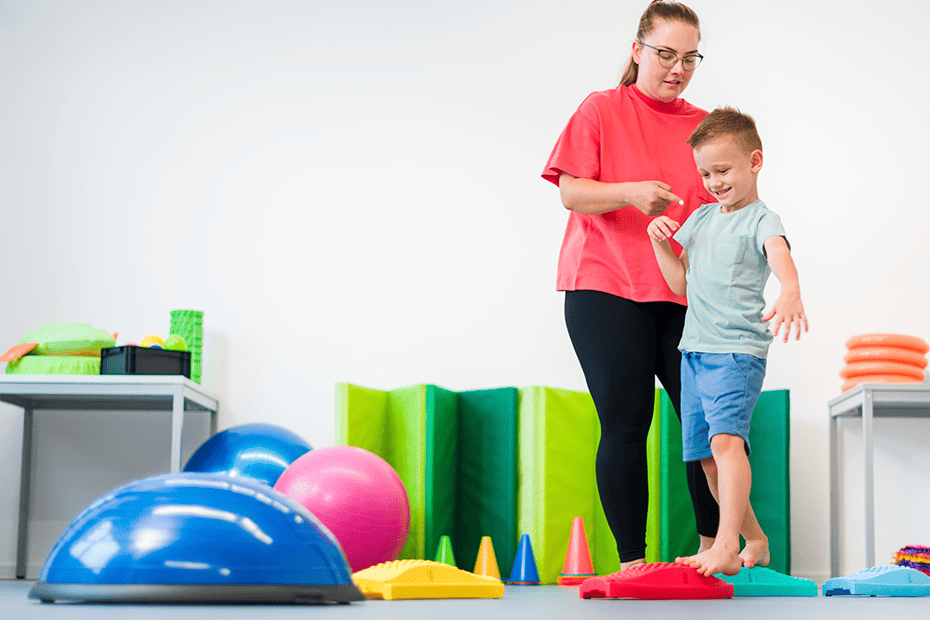
Pediatric physical therapists use a number of targeted interventions to improve a child’s balance and coordination. These interventions are engaging and interactive to keep young patients motivated.
1. Core Strengthening Exercises
The core muscles, which include the muscles of the abdomen, lower back, and pelvis, provide stability, balance, and coordination for the entire body. Some core-strengthening exercises used in physical therapy include:
- Plank exercises: Help improve stability by engaging core muscles.
- Seated balance exercises: Using therapy balls to promote postural control and core engagement.
- Animal walks: Engaging activities like bear crawls or crab walks strengthen core muscles while improving coordination.
2. Balance Training Activities
Improving balance requires targeted exercises that challenge the child to maintain stability in various positions. Some common techniques used in pediatric physical therapy include:
- Single-leg stance: Encourages weight shifting and postural control.
- Tandem walking: Walking heel-to-toe in a straight line to refine balance and stability.
- Obstacle courses: Designed to challenge the child to navigate different movement patterns, improving dynamic balance.
- Balance beams and stepping stones: Help strengthen the lower body while teaching the child to maintain equilibrium on narrow or unstable surfaces.
3. Coordination-Boosting Exercises and Games
Pediatric physical therapists can boost coordination through engaging physical activities such as:
- Catching and throwing games: Improve hand-eye coordination and reaction time.
- Jump rope exercises: Promote rhythmic movement control and bilateral coordination.
- Simon Says or dance-based games: Encourage motor planning, sequencing, and body awareness.
- Hand-eye coordination drills: Activities like tossing bean bags into targets or threading beads onto strings help refine fine motor skills.
Common Conditions That Benefit from Physical Therapy
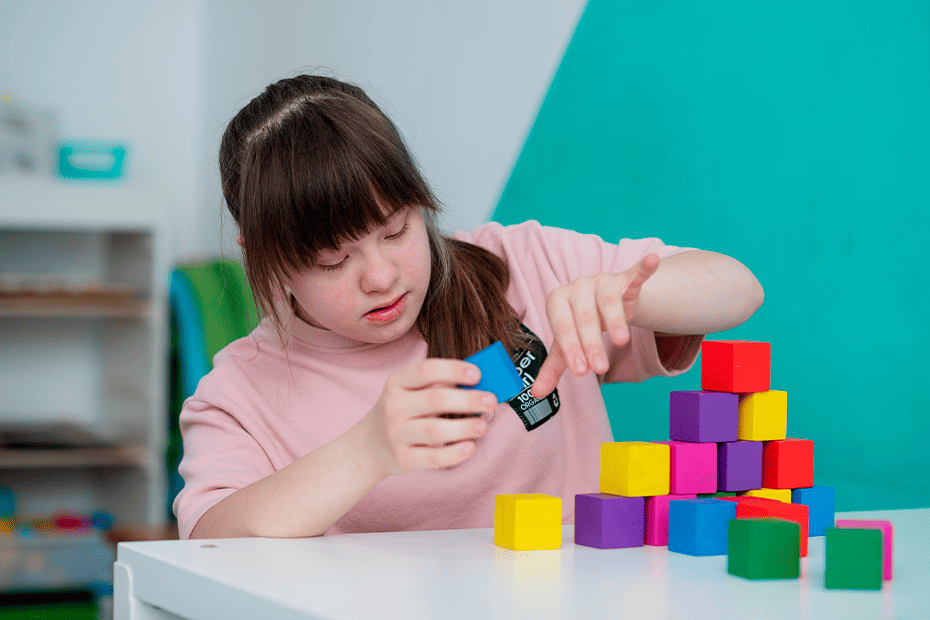
Balance physical therapy is especially beneficial for children who experience motor difficulties due to medical conditions. Some of the most common conditions that require balance and coordination therapy include:
- Cerebral Palsy: A neurological disorder that influences muscle tone and movement, often causing difficulties with coordination and balance.
- Down Syndrome: A genetic condition marked by decreased muscle tone and joint laxity, which can make physical movements less precise.
- Developmental Coordination Disorder (DCD): A motor skills disorder that affects movement planning and execution, making daily activities like writing or fastening buttons more difficult.
- Muscular Dystrophy: A genetic condition that leads to progressive muscle weakness, impacting mobility and physical stability over time.
Long-Term Benefits of Improved Balance and Coordination
Improving a child’s balance and coordination through balance physical therapy has far-reaching benefits that extend beyond just movement. These improvements contribute to:
- Increased independence: Better motor control allows children to complete daily tasks, such as dressing themselves and climbing stairs, without assistance.
- Improved academic performance: Proper posture and motor control contribute to better handwriting and classroom participation.
- Greater participation in social and recreational activities: Increased confidence enables children to engage in sports and playtime with peers.
- Enhanced self-esteem and emotional well-being: Overcoming physical challenges leads to a sense of accomplishment and increased self-confidence.
Incorporating Therapy into Daily Life
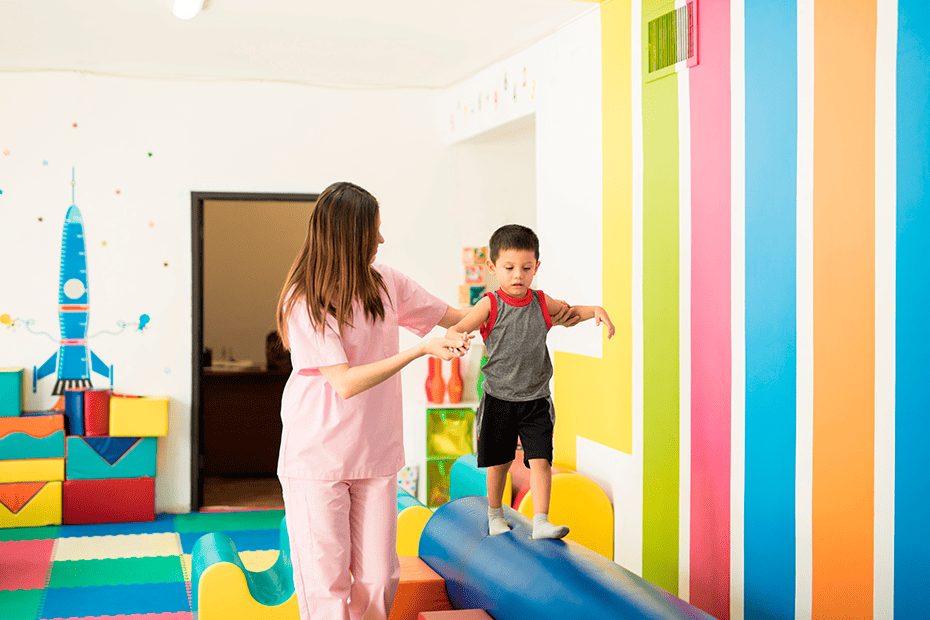
Physical therapy does not end when the session is over; it is essential to incorporate therapy exercises into daily routines to reinforce progress. Parents and caregivers can support their child’s development by engaging in activities such as:
- Practicing balance skills while brushing teeth by standing on one foot.
- Encouraging games that involve jumping, skipping, or hopping.
- Engaging in family-friendly yoga or stretching routines.
- Setting up home obstacle courses to make coordination exercises fun.
FAQs About Pediatric Physical Therapy
Q: How long does it take to see results after pediatric physical therapy?
A: While every child’s progress is unique, many families notice improvements within weeks, especially with consistent practice at home.
Q: Will pediatric physical therapy be uncomfortable or tiring for my child?
A: Pediatric physical therapy sessions are designed to be fun and playful. Mild soreness from muscle use is possible but should never cause distress.
Q: What if my child resists doing exercises at home?
A: Make exercises a game! Use rewards or involve siblings to create a fun, collaborative environment.
Support your child’s growth with pediatric physical therapy
Pediatric physical therapy plays a transformative role in helping children improve their balance and coordination. If your child is experiencing difficulties with balance and coordination, consulting a pediatric physical therapist could be the first step toward unlocking a more active, independent, and fulfilling future.
Through a combination of structured therapy sessions from Tip of the Tongue experts, play-based activities, and home exercises, children can achieve remarkable progress in their physical development. Contact us today to learn more.

